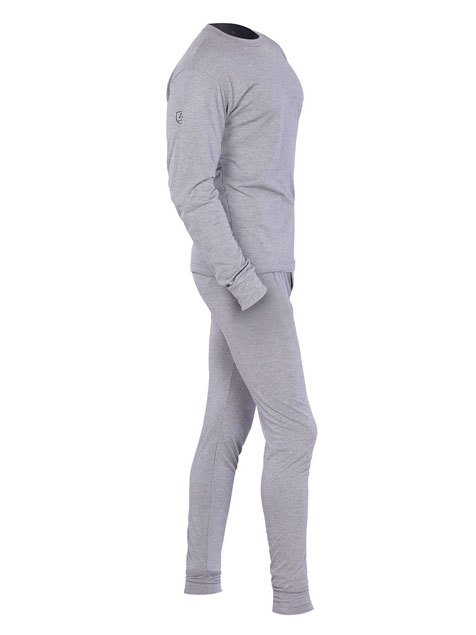
In hazardous work environments where exposure to flames and thermal hazards is a constant risk, the importance of flame-resistant (FR) innerwear cannot be overstated. While outer garments provide primary protection against fire and heat, FR innerwear serves as an additional layer of defense, safeguarding workers from burn injuries and enhancing overall safety and comfort. This article delves into the significance of FR innerwear in high-risk industries and explores how it contributes to a safer work environment.
The Significance of FR Innerwear:
Flame-resistant innerwear plays a critical role in protecting workers in industries such as oil and gas, firefighting, electrical utilities, manufacturing, and construction, where the risk of fire and thermal hazards is inherent. Unlike regular clothing, which can ignite and continue to burn, FR innerwear is designed to resist ignition and minimize the extent of burn injuries in the event of a flash fire or arc flash incident.
One of the primary reasons for wearing FR innerwear is to provide an additional layer of protection against heat transfer to the skin. When exposed to flames or high temperatures, FR innerwear acts as a barrier, reducing the heat flux reaching the body and delaying the onset of burns. This critical layer of protection can make a significant difference in the severity of injuries sustained by workers in hazardous environments.
Moreover, FR innerwear helps mitigate the risks associated with thermal hazards such as flash fires, arc flashes, and molten metal splashes. These incidents can occur suddenly and unpredictably, posing a serious threat to worker safety. By wearing FR innerwear, workers have an added measure of protection that can help minimize injuries and increase the likelihood of survival in the event of an emergency.
Key Features and Benefits:
The importance of FR innerwear extends beyond its flame-resistant properties. Modern FR innerwear garments are designed to offer a host of features and benefits that enhance safety, comfort, and performance for workers in challenging environments.
One of the key benefits of FR innerwear is its moisture-wicking capabilities. Working in hot and humid conditions can lead to excessive sweating, which can compromise comfort and increase the risk of heat stress. FR innerwear is often made from moisture-wicking fabrics that draw sweat away from the skin, keeping workers dry and comfortable throughout their shift.
Additionally, FR innerwear is engineered for comfort and mobility, allowing workers to perform their duties without restriction. Whether climbing ladders, operating machinery, or working in confined spaces, workers need innerwear that moves with them and doesn’t hinder their range of motion. FR innerwear garments are designed with ergonomic features and stretchable materials to ensure optimal comfort and flexibility.
Furthermore, FR innerwear is durable and long-lasting, capable of withstanding the rigors of daily wear and laundering. Unlike regular clothing, which may lose its flame-resistant properties over time, FR innerwear maintains its effectiveness even after multiple wash cycles, ensuring consistent protection for workers over the long term.
Compliance and Regulations:
In many industries, compliance with safety regulations and standards is mandatory to ensure the well-being of workers and mitigate legal liabilities. The use of FR innerwear is often governed by industry-specific standards such as NFPA 2112 (Standard on Flame-Resistant Clothing for Protection of Industrial Personnel Against Short-Duration Thermal Exposures from Fire) and NFPA 70E (Standard for Electrical Safety in the Workplace).
These standards establish requirements for the design, performance, testing, and certification of FR innerwear garments to ensure they meet minimum safety criteria. Employers have a responsibility to provide workers with appropriate FR innerwear that complies with relevant standards and adequately protects them from thermal hazards in the workplace.
Training and Education:
In addition to providing workers with FR innerwear, employers must also ensure they receive adequate training and education on its proper use and care. Training programs should cover topics such as the risks of thermal hazards, the importance of wearing FR innerwear, how to properly don and doff garments, and guidelines for laundering and maintenance.
Workers should be familiar with the limitations of FR innerwear and understand that it is just one component of a comprehensive safety program. Personal protective equipment (PPE) such as FR outerwear, gloves, helmets, and safety glasses may also be required depending on the specific hazards present in the workplace.
In hazardous work environments where exposure to flames and thermal hazards is a constant risk, the importance of flame-resistant innerwear cannot be overstated. By providing an additional layer of protection against heat transfer to the skin, minimizing the risks of burn injuries, and enhancing overall safety and comfort, FR innerwear plays a crucial role in safeguarding workers and creating a safer work environment. Employers must prioritize the use of FR innerwear and ensure workers receive adequate training and education on its proper use and care to effectively mitigate the risks associated with thermal hazards in the workplace.